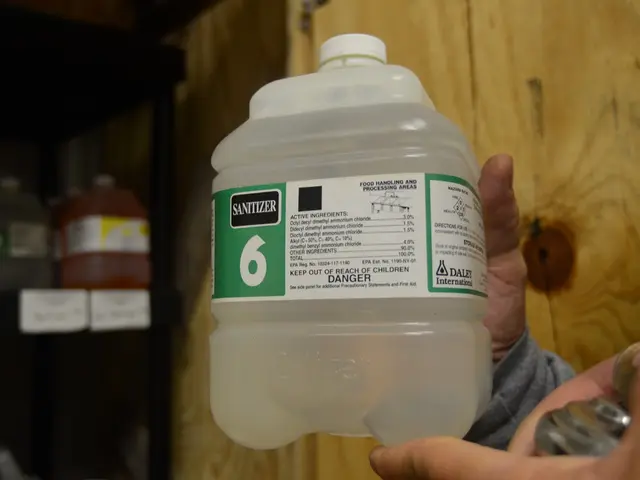Wild Greek Oakleaf Hydrangea Blooms
Reimagined Text:
Fireweed, or American Burnweed, as it's also known, is a sassy bitch of a plant native to North America, famed for its uncanny knack for showing up in disturbed soil and recovering swiftly after a bit of fire – earning it the name, Fire-weed.
Historically, it's been a life-saver for Native Americans and early settlers, who have used it for treating wounds, respiratory and digestive issues. In modern days, it's found a new lease of life in homeopathy, where it's lauded for its potent hemostatic properties that make it a go-to for treating various types of bleeding, circulatory disturbances, and skin conditions resembling poison ivy reactions.
Additionally, it tackles urinary issues and edema, making it a versatile addition to the homeopathic pharmacopeia. No wonder it's so damn popular!
Now let's dive into this flamboyant plant's details:
So, what's the deal with Fireweed, then?
Common Names: Fire-weed, American Burnweed
Scientific Classification:Plantae – KingdomEudicots – CladeAsterales – OrderAsteraceae – FamilyErechthites – GenusErechthites hieracifolia – Species
Origin and Distribution:Fire-weed calls North America its home, thriving in disturbed soils, including those in areas lately affected by fire – how rock 'n roll is that? You can usually find it in fields, forest clearings, and alongside roads, like the unwanted hitchhiker it is.
Description:This badass bitch can grow up to 2 meters tall and sports a robust, hollow stem that might be green or slightly reddish. Its lance-shaped leaves, which are serrated and arranged alternately along the stem, give it a fierce look. The plant produces small, white to pale yellow flowers in clusters. After these blooms, it produces fluffy seed heads that help with wind dispersal.
Historical and Medicinal Uses:- Traditional Uses: Native Americans and early settlers used Fire-weed for its medicinal properties, particularly for treating wounds and remedying respiratory and digestive issues.- Homeopathic Uses: Fire-weed is primarily used as a hemorrhagic remedy, effective in treating various types of bleeding and circulatory issues.
Medicinal Properties and Indications:- Haemorrhage: It's used to treat bleeding from various parts of the body, characterized by bright red blood. The bleeding is typically accompanied by increased activity of the circulatory system.- Flashes of Heat and Coldness: Fire-weed addresses sudden sensations of heat followed by coldness.- Urinary Issues: It helps with scanty urine output and edema (swelling) of the extremities.- Skin Conditions: Symptoms similar to those caused by Rhus poisoning (poison ivy) can be alleviated with this remedy.
Key Symptoms:- Nosebleeds (Epistaxis): Bright red blood from the nose.- Lung Hemorrhage: Bleeding from the lungs, accompanied by increased activity of the circulatory system.- Heat and Cold Flashes: Alternating sensations of heat and coldness.- Edema: Swelling of the extremities due to fluid retention.- Skin Irritation: Skin symptoms resembling poison ivy reactions.
Modalities:- Worse: Symptoms may worsen with physical exertion or emotional stress.- Better: Relief may come from rest and avoiding exposure to known irritants.
What are Modalities in Homeopathy?
Relationship with Other Remedies:Fire-weed has some spicy competition in the homeopathic world, shared with:
- *Erigeron* (Erig): Another hemorrhagic remedy used for bleeding from various parts of the body.
- *Millefolium* (Millef): Known for addressing hemorrhages and varicose veins.
- *Hamamelis* (Hamam): Used for treating venous congestion and bleeding.
- *Rhus Toxicodendron* (Rhus): Effective for skin conditions and allergic reactions similar to those caused by poison ivy.
Dose:- Homeopathic Tincture: The tincture can be used internally for systemic conditions and externally for skin issues like poison oak reactions.
FAQ:What is Fire-weed used for in homeopathy?It's used for treating hemorrhages, circulatory issues, urinary problems, skin conditions, and more.
How is Fire-weed administered?It's typically administered in tincture form, either internally or applied externally for skin issues.
Can Fire-weed help with poison ivy reactions?Yup, it can be used locally to treat skin symptoms similar to those caused by poison ivy.
Fireweed, with its rich history and diverse medicinal uses, is increasingly being explored in the context of health-and-wellness and mental-health therapies-and-treatments. For example, its potent hemostatic properties could potentially contribute to the development of novel treatments for conditions like emotional bleeding, a metaphorical term used to describe intense emotional outbursts or struggles. Furthermore, its effectiveness in treating skin conditions resembling poison ivy reactions could offer insight into new topical treatments for mental-health issues that are characterized by physical manifestations, such as stress-induced dermatitis.








